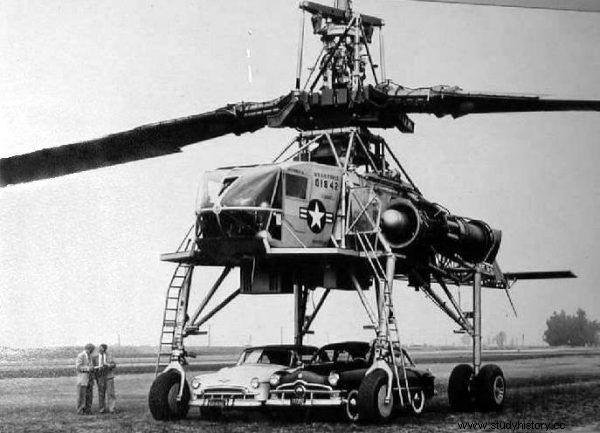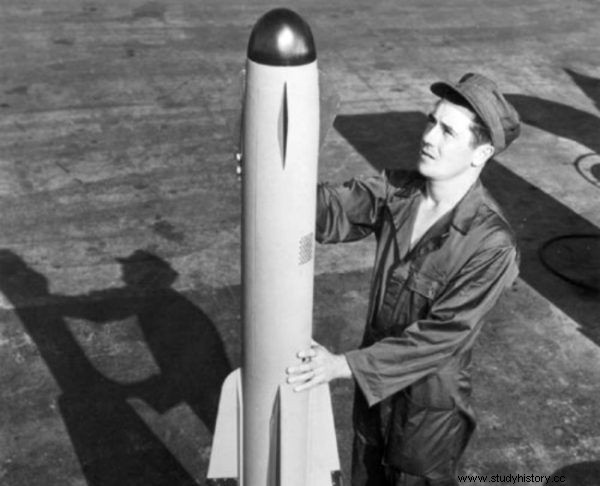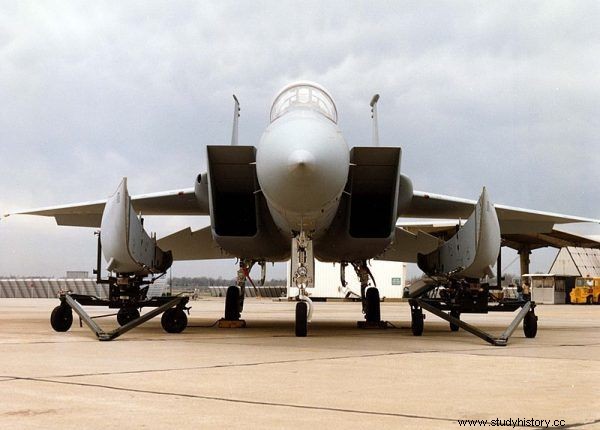At 29, he landed in federal prison on espionage charges. The court was merciless - it sentenced him to life imprisonment. After all, this amateur spy obtained dozens of secret documents and has been driving the nose of the American services for years ... How is that possible?
Marian Zacharski was born in August 1951 in Gdynia. Although his father Wacław served in the Home Army during the war and participated in the Warsaw Uprising, which was not welcomed by the Polish United Workers' Party, he did very well in the harsh reality of the People's Republic of Poland. In the 1960s, he was the director of the Sopot Machine Industry Plant, which was part of the Foreign Trade Center - Metalexport.
Road to the USA
The future agent graduated in law from the University of Warsaw and, probably thanks to the help of an influential parent, in September 1973 he was employed at Metalexport. At about the same time, an intelligence officer contacted the young man and offered him cooperation. “I feel like the hero of the books I have read until recently” - recalled Zacharski years later. As you can guess, he accepted the offer.
For the next two years he was not idle. He traveled professionally in Europe, Asia and America, polished his English, took managerial courses (as we would call them today) and climbed within the company's structures. In 1975, he got an offer that is not rejected. He was delegated to Polamco ( Polish-American Machinery Corporation ), which dealt with the sale of Polish machine tools on the American market. This was to be his official occupation in the USA. More important, however, was what he was instructed to do after hours - to obtain valuable information for the country.
In October 1976, Zacharski with his wife and 9-month-old daughter set off for their promised land. The man became the head of sales for the entire West Coast. For good reason. It was there, in northern California, that the legendary Silicon Valley was located - a real field of new technologies, in which, among others, the largest companies producing for the needs of the US army were located . This place was a tasty morsel for the Polish intelligence service.

The headquarters of companies producing equipment for the US armed forces were located in the Silicon Valley. Hughes XH-17 shown.
About a year later, in 1977, the services opened a personal file for a colleague who was staying overseas. He acted as an "operational contact" nicknamed "Pay". He became a "knock". What does it mean? “« Knock »is an ordinary mortal who works in a certain place, and at the same time collects and transmits certain information. This is not a professional. He's just trained. And not always, "explains (former) agent Bruno Kowalsky in an interview book titled " How much do they know about you? Spies and wiretaps in Poland ” .
Initially, the interview did not have any big plans for its new ward. It was expected that "Pay" would provide information on American companies producing machine tools. He could also indicate people worth recruiting. He was simply one of many Polish agents operating in foreign trade.
It was implemented gradually into activities. The first two years in the US he got to spy on "acclimatization". He was ordered to make profitable acquaintances and do some research in the field. Ease of making contacts, openness and diligence helped him immensely in this. It should be emphasized that Zacharski was also perfectly fulfilling in terms of business. The machine tool trade was excellent for him.
Business interests, but Pay never forgot his second identity. He lives with his family in a luxurious estate in Playa del Rey - a seaside district of Los Angeles. It was there, during one of the events, that he met the Bells in 1977. William Bell was a manager at the Hughes Aircraft Company. The Pole realized immediately that acquaintance with him could not be overestimated .
Bell's Complicated Fate
His new acquaintance, born in 1920, a World War II veteran, joined the Navy at the age of 18. He took part, inter alia, in the battle for Iwo Jima. After the war, he graduated in Applied Physics at the University of Southern California. He worked at the Hughes Aircraft Company from 1950. Over the years, he has become a specialist in military radar applications. He traveled extensively on business, both in the United States and in Europe (Paris, Bern) and the Middle East.

On the Old Continent, Bell had an affair with his young secretary Rita. Unfortunately, the most expensive restaurants, expensive gifts and exclusive trips ruined his finances. Worse, the American tax office began to take an interest in him. It was decided that when working in Europe, he should pay taxes twice - also in the USA. And since he wasn't doing it, debt and interest rose at an alarming rate . He soon found himself in a trap.
It was not the end of misfortunes. When the cheated wife found out about her rival, she filed for divorce. Their marriage officially ended on September 23, 1976; a week later, Bell married Rita. Things seemed to be getting better now, but the future held dire news. William's son was badly burned while at a campground in Mexico. Despite all efforts, it was impossible to save his life.
The American, crushed by this event, was reaching for the glass more and more often. Unable to cope with the growing debt, he also applied to the court for bankruptcy. It was then that Zacharski appeared in his life. Nice, listening and willing to give financial support to a colleague. Of course, not for free.
Bell on the "Paya" network
The gradual "chipping" of Bell began. Playing tennis together, hours of drinking and talking to casinos did their job. Initially, the Pole asked his colleague for small favors, such as contacting him with the director of the Hughes Aircraft Company. He paid $ 200 for information, which he accepted without much resistance.
The first valuable acquisition was the Radar Handbook. Zacharski simply borrowed it - a copy was kept by the American on a shelf in the living room. This was followed by other treasures - "Pay" received confidential and finally secret materials.

Hughes Aircraft Company dealt with, inter alia, the production of rockets. The photo shows a Falcon rocket.
The loot list was impressive. It included, among others, plans to build the F-14, F-15, F-16 and F-18 . Zacharski also obtained documents on the B-1 strategic bomber, Stealth aircraft invisible to radar, and Hawk and Roland missiles. In addition, he could provide employers with sonar plans for nuclear submarines, and even ... the American analysis of the Soviet MiG-25 fighter. The description of the electronic reconnaissance of the Warsaw Pact on the borders of Germany-East Germany-Czechoslovakia also turned out to be invaluable.
The list of successes of the seemingly ordinary "knocking" did not end there. Bruno Kowalsky in his book How Much Do They Know About You? Spies and wiretaps in Poland ” argues that Marian Zacharski could also have been behind the theft of the American M1 Abrams tank! “It was going to Turkey, already then a NATO member. On the way, the ship with the tank stopped in the Greek port of Ioannina. There, the tank was accidentally unloaded and loaded onto a ship sailing towards Poland. An incredible story, ”says the agent.
What about the American services?
It is hard to believe that a Pole, an amateur in the espionage profession, did not commit a major slip-up. Initially, he acted daringly - personally, against the recommendations of the Polish services, he took the original materials to Chicago. As time passed, however, he became more and more cautious. And rightly so. The FBI had information from the beginning of 1979 that secret documents from the Hughes Aircraft Company were passed on to Polish intelligence agents. Fortunately, they had no hard evidence of Paya's espionage activity.
The breakthrough came in 1981. The FBI found out then that some of his neighbors were involved in the transmission of the documents to Zacharski. After painstaking analysis, Bell was selected. On June 23, American agents launched an attack. Bell couldn't stand the pressure, he already had enough secrets. He started to rain down. He talked about everything:what secrets he gave to the Pole and how much he got for them. After this confession, he got an offer he couldn't refuse: he would either agree to help catch the agent or spend the rest of his life behind bars . The choice was quite simple.

Among the documents obtained by Zacharski, there are allegedly also plans for the F-15 fighter. Illustrative photo.
A few days later, an American, equipped with the appropriate listening equipment, asked his friend to meet him. The course of the interview was satisfactory to the FBI. The end of Paya's espionage career came on June 28, when a dozen or so officers of the Bureau thundered into the Zacharski home. The Polish spy was arrested. During a thorough search of the apartment, a lot of valuable evidence (clichés, recordings) was found, which eventually plunged him.
During the trial, Zacharski did not plead guilty in accordance with previously received instructions. It didn't do much. There could be only one sentence:life imprisonment. The Pole ended up in a maximum security prison in Memphis.
Meanwhile, the American and Polish services had their hands full, although the tasks were completely different. The Americans wanted to learn the secrets of the Polish spy and PRL services. Threats or rewards urged him to cooperate - to no avail. Poles, in turn, supported him financially and psychologically. There were concerns that "Pay" would break and agree to cooperate with the enemy. It would be a huge blow to the authorities of People's Poland.
Exchange on "spy bridge"
The authorities in the country, from the moment of the arrest of their spy, began (in cooperation with the Russians and East Germany) to probe the US in order to exchange him for American agents. After long and complicated negotiations, a bargain was finally made. Zacharski and three other communist spies were exchanged for ... 23 American agents detained by the communist bloc countries.

Spies were exchanged on the Glienicke Bridge.
The final "transaction" took place on June 11, 1985 on the Glienicke Bridge (connects Berlin and Potsdam). This is what Bruno Kowalsky tells about her:
The boundary lines are drawn by the Metropolitan Police's anti-terrorist units. The security feature is that sharpshooters are positioned along the line of the bridge and target specific people. All within the fears of the Ministry of the Interior, who are afraid that we will be deceived - that is - they will take our spies during the exchange, without giving theirs away . The general rule is that on both sides the named spies introduce themselves, say who they are, then ask them if they want to go to the other side and if they are not forced to do so.
After returning to Poland, "Pay" became a star. He was highly respected in service circles. He was already burned as an agent, so he was given a job that used his business skills. He became the commercial director of Pewex.
What about Bell? The American judiciary treated him mildly. In 1981, he was sentenced to 8 years in prison. He has served over 4 years. In the wild, however, he could not deal with the demons of the past and fell into alcoholism. He died in 1986.
Buy a book at a discount on empik.com

